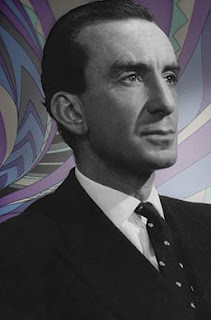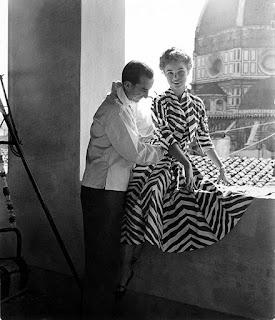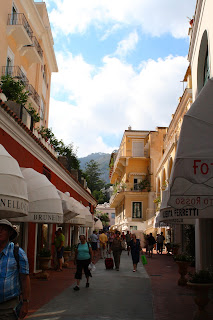The son-in-law Mussolini had shot as a traitor
 |
| Galeazzo Ciano, pictured at his ministerial desk at the Palazzo Chigi in 1937 |
The 40-year-old former Foreign Minister in Mussolini's government was also his son-in-law, having been married to Edda Mussolini since he was 27. Yet even his position in the family did not see him spared by the ousted dictator, who had been arrested on the orders of King Victor Emmanuel III but, after being freed by the Nazis, later exacted revenge against those he felt had betrayed him.
Ciano, a founding member of the Italy's National Fascist Party whose marriage to the Duce's daughter certainly helped him advance his career, had largely been supportive of Mussolini and was elevated to Foreign Minister in part because of his role in the military victory over Ethiopia, in which he was a bomber squadron commander. Yet he expressed doubts from the start over Italy's readiness to take part in a major conflict.
In his diaries, which Edda was later to use without success as a bargaining tool as she tried to save her husband's life, Ciano recalled that he had tried to persuade Mussolini against committing to an alliance with Hitler, but in vain. He wrote: "At first he agrees with me - then he says that honour compels him to march with Germany."
 |
| Ciano, centre, to the right of Hitler and Mussolini, to the left of Heinrich Himmler and Hermann Göring, in Munich in 1938 |
Ciano clashed with the leader again in January 1943, urging him to seek terms for an armistice with the Allies rather than see Italy, which had already suffered significant damage in bombing raids, exposed to the destruction of a full-scale invasion. This time he and his fellow cabinet members were all sacked.
At the meeting of the Grand Council on July 24, convened by Mussolini himself after news reached him of the Allied landings in Sicily, it was Mussolini's announcement that the Germans were thinking of abandoning southern Italy that prompted fierce argument, culminating in a vote on whether Victor Emmanuel III should take back his full constitutional powers, in effect sidelining Mussolini. The count was 19-8 in favour.
Mussolini was arrested the following day after appearing to disregard the vote and arriving at his office as if he would continue to be in charge. It was at this point that Ciano made what would prove a fatal mistake.
With anti-Fascist sentiment growing in Italy, he feared that he too might be arrested by new prime minister Pietro Badoglio's incoming government regardless of his vote against the Duce. He fled to Germany with Edda and their three children in late August, seeking sanctuary.
What he did not know was that Hitler was furious that Mussolini had been ousted. The German leader had Ciano arrested and detained, and when he restored the Italian leader to power in his new Italian Social Republic, having first sent paratroopers to rescue him from house arrest at the Gran Sasso mountain resort in Abruzzo, one of his first acts was to send Ciano back to face trial for treason.
 |
| Emilio Pucci |
Ciano, who had been born in Livorno in 1903 and had joined his father, Costanza, an Admiral in the First World War, in supporting Fascism from the outset, was tried in Verona along with four other members of the Grand Council. After guilty verdicts were returned, the five were tied to chairs and shot in the back. Ciano's last reputed words were: "Long live Italy!"
Edda, who died in Rome 51 years later at the age of 84, never forgave her father. While she was in Switzerland, she was tracked down by an American war correspondent who ensured that her husband's diaries were published in London in 1946. Evidence from them was used in the prosecution of Hitler’s Foreign Minister, Joachim von Ribbentrop, during the post-war Nuremberg Trials.
Travel tip:
Livorno, where Ciano was born, is an historic port on the Tuscan coast, notable for the area built by the Medici family in the 17th century around the town's canal network that has become known as Quartiere La Venezia - the Venice Quarter. Originally comprising warehouses and some impressive houses built by merchants around Piazza della Repubblica and Via Borra, it is nowadays a popular area for nightlife, with many bars and restaurants.
 |
| Titian's Assumption of the Virgin in the Duomo at Verona |
Verona is most famous for the Roman amphitheatre known as the Arena in Piazza Bra, a lovely square ringed by bars and restaurants, and for the Casa di Giulietta - Juliet's House - which was supposedly the location of the balcony scene in Shakespeare's Romeo and Juliet, although there is no actual evidence that it was. There are many other genuinely historic buildings, including the 14th century castle Castelvecchio, which sits on the banks of the Adige river, and the Duomo, which was rebuilt in the 12th century after the 8th century original was destroyed in an earthquake, in which the artworks include an Assumption of the Virgin by Titian.
More reading:
Republic of Salò was Mussolini's last stand
Mussolini freed by Nazis in audacious Gran Sasso raid
How fashion designer Emilio Pucci helped Mussolini's daughter escape the Nazis
Also on this day:
1975: Birth of Italy's Prime Minister, Matteo Renzi
(Picture credit: Titian painting by Didier Descouens via Wikimedia Commons)
Home




